Ord: Supporting information

Introduction
The following set of notes provides consolidated reports for each of the water stores and systems within the Ord region during the 2014–15 year. The water stores and systems included in the region are shown in Figure N1.
For more information about the region, please refer to the General description section of the 'Contextual information'.
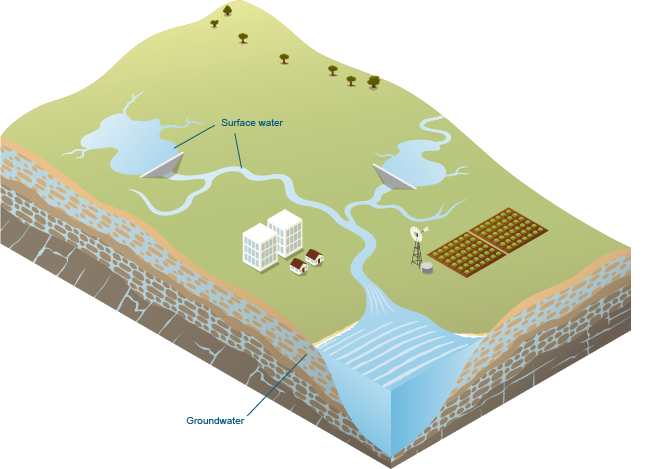
Figure N1 Water stores and systems within the Ord region
Information on all water flows to and from each water store and system are presented in this note, including between-store flows and transfers that are not presented in the water accounting statements. The between-store flows and transfers that occur in the region are presented in Figure N2.
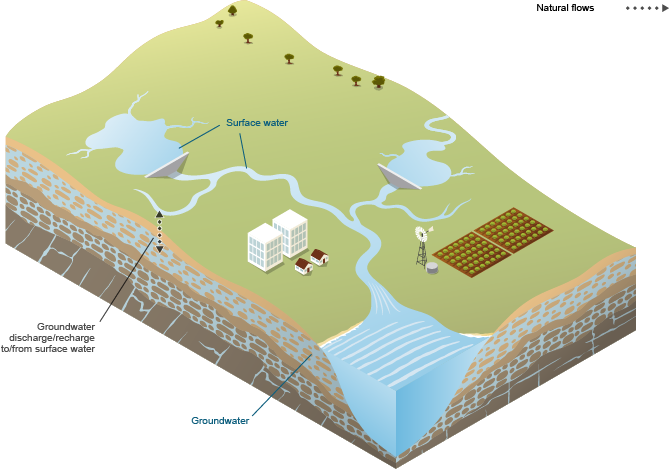
Figure N2 Between-store flows that occur within the Ord region
The between-store flows and transfers (Figure N2), which are eliminated from the region's water accounting statements, are shown in italics throughout the following set of notes.
Surface water store
The Ord region's surface water store has four components:
- storages
- regulated rivers
- unregulated rivers
- lakes and wetlands.
A reconciliation of the surface water Statement of Water Assets and Water Liabilities and Statement of Water Flows is provided in Table N1. Further details on assets, liabilities, and flows are provided in the following sections.
Methods used to derive reported volumes can be found in the Quantification approach note.
| 2015 (ML) | 2014 (ML) | |
| Opening surface water store | 10,944,857 | 8,594,623 |
| Inflows | 6,467,901 | 14,958,874 |
| Outflows | (6,453,883) | (10,405,662) |
| Balancing item | (1,015,905) | (2,202,978) |
| Closing surface water store | 9,942,970 | 10,944,857 |
| comprises: | ||
| Water assets | 9,942,970 | 10,944,857 |
| Water liabilities | (389,855) | (293,774) |
| Net water assets | 9,553,115 | 10,651,083 |
Assets and liabilities
Physical assets
Physical surface water asset volumes in the Ord region at 30 June 2015 were:
- storages—9,928,770 ML
- regulated rivers—14,200 ML.
The regulated river is defined as the lower Ord River, which extends 76 km from Lake Kununurra (Figure N3) to the upper tidal limit.
The volume of water in unregulated rivers and lakes and wetlands could not be quantified due to a lack of available data; however, the volume of water held in channels and lakes is considered to be relatively small compared to the volume held in storages.
The location of each storage within the Ord region and the volume of water in each storage (including dead storage) as a percentage of total storage capacity at the end of the 2014–15 year is shown in Figure N3.
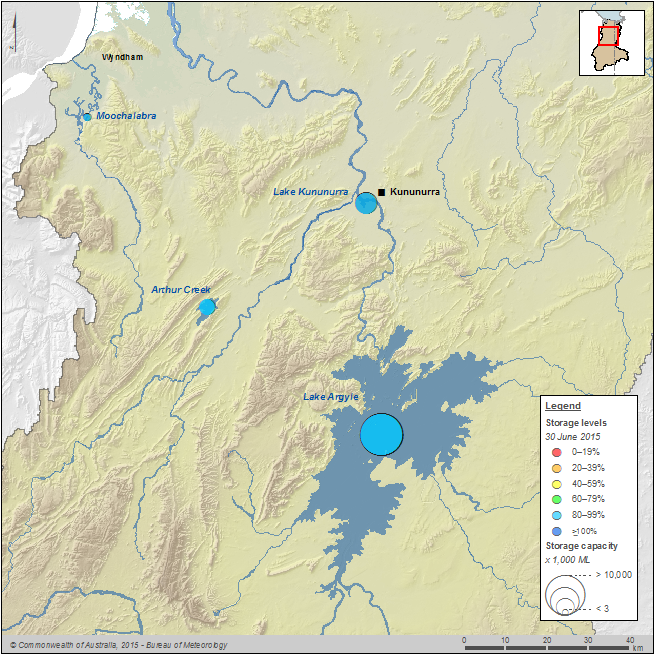
Figure N3 Percentage-full volume on 30 June 2015 for each storage
The overall storage volume within the Ord region decreased during the 2014–15 year from 100% to 91% capacity. Total volume of water within each storage at 30 June 2015, compared with the previous year and the 5-year mean, is given in Figure N4.
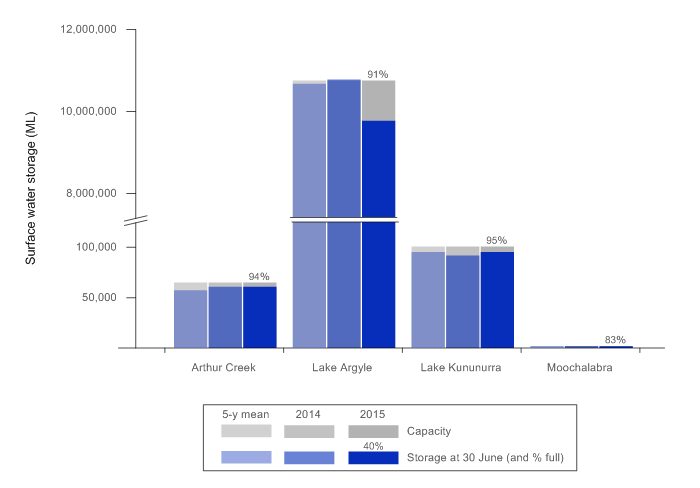
Figure N4 Total volume of water in each storage at 30 June 2015 compared with the previous year and the 5-year mean
The water volume in Lake Argyle decreased during the 2014–15 year from 100% to 91% full at 30 June 2015. The capacity volume at the start of the 2014–15 year was attributed to the significant water event that occurred early February 2014 over the lower Ord region; Lake Argyle filled to more than 120% capacity during the event and remained above 100% for the remainder of the 2013–14 year (see the 2014 Account). Below average inflows into Lake Argyle during the 2014–15 year (see Climate and water overview) meant the storage volume decreased during the year and at 30 June 2015 was below the 5-year mean volume for Lake Argyle.
All other storages within the Ord region were more than 80% of capacity at 30 June 2015 (Figure N4). These smaller storage volumes remain relatively unchanged from year to year compared to Lake Argyle.
Non-physical assets
There are no non-physical surface water assets in the region.
Liabilities
Surface water liabilities in the Ord region refer to the volume of surface water allocation remaining on licence entitlements at the end of the 2014–15 year for:
- individual users—20,585 ML
- urban water system—669 ML
- irrigation scheme—368,601 ML.
Most of the water supply licences for the region do not have a water management year that ends on 30 June. Therefore, the volume of allocation remaining at the end of the 2014–15 year for the Ord region is the unused component of the annual allocation for these licence entitlements. Details are provided in tables N2–N4.
As there are no carryover provisions for these licences, the portion of surface water allocation that has not been abstracted at the end of the water year is forfeited (tables N2–N4).
Further information on all entitlements and allocation arrangements are detailed in the Surface water rights note.
| Volume (ML) | |
| Opening balance at 1 July 2014 | 22,160 |
| Allocation | 37,612 |
| Allocated diversion | (23,057) |
| Adjustment and forfeiture | (16,130) |
| Closing balance at 30 June 2015 | 20,585 |
| Volume (ML) | |
| Opening balance at 1 July 2014 | 670 |
| Allocation | 775 |
| Allocated diversion | (436) |
| Adjustment and forfeiture | (340) |
| Closing balance at 30 June 2015 | 669 |
| Volume (ML) | |
| Opening balance at 1 July 2014 | 270,944 |
| Allocation | 459,800 |
| Allocated diversion | (165,653) |
| Adjustment and forfeiture | (196,490) |
| Closing balance at 30 June 2015 | 368,601 |
Inflows and outflows
A schematic diagram representing all the inflows and outflows associated with the surface water store in the Ord region is provided in Figure N5.
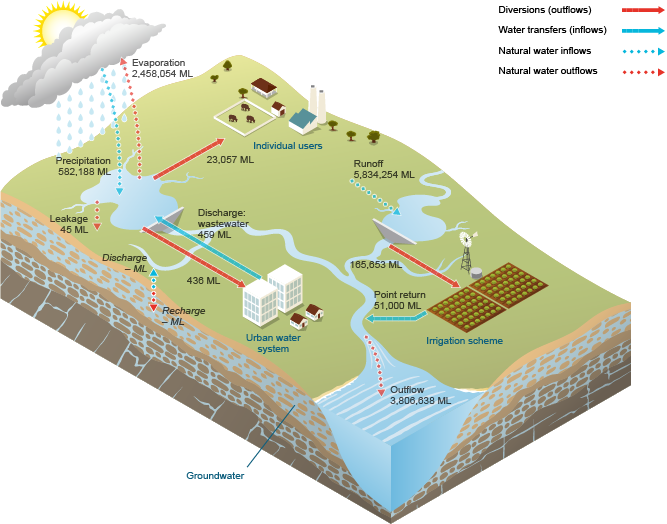
Figure N5 Water inflows and outflows for the surface water store within the Ord region during the 2014–15 year
Surface water inflows
Total inflows to surface water were 6,467,901 ML and comprised the following:
- Precipitation—582,188 ML
- Runoff—5,834,254 ML
- Discharge: wastewater—459 ML
- Point return: irrigation—51,000 ML.
The largest water inflow is runoff (5,834,254 ML). The volume of runoff during the 2014–15 year is less than half that during the previous year. This reflects the relatively poor rainfall conditions experienced across the region during the typically wetter months of February–March (see Climate and water overview).
The remaining three surface water inflows are precipitation (582,188 ML), discharge from the wastewater system (459 ML) and point return from the irrigation scheme (51,000 ML). More than 95% of the total volume of precipitation on surface water in the region occurs at Lake Argyle. The discharge from the wastewater system refers to the outflow of treated wastewater to rivers from treatment plants at Kununurra (459 ML) and Wyndham (– ML). The point return from the irrigation scheme, which refers to the volume of return flow from the Ord River Irrigation Area to the Ord River, is an estimated volume based on the assumption that approximately 2 m3/s of surplus irrigation supply water and return flows contribute to the lower Ord River during the dry season (Department of Water, 2012).
Groundwater discharge (– ML) was not recognised as it could not be adequately quantified. An expansion of the monitoring bore network and improved understanding of aquifer extent and properties are required to adequately quantify surface water–groundwater movement in the region.
Surface water outflows
Total outflows from surface water were 6,453,883 ML and comprised the following:
- Evaporation—2,458,054 ML
- Outflow—3,806,638 ML
- Leakage: landscape—45 ML
- Allocated diversion: individual users—23,057 ML
- Allocated diversion: urban system—436 ML
- Allocated diversion: irrigation—165,653 ML.
The largest water outflow is the river outflow from the region (3,806,638 ML), which refers to the annual volume of flow from the Ord River to the Cambridge Gulf, and from the Keep River to the Timor Sea during the 2014–15 year. This outflow is less than half that which occurred during the previous year, which primarily reflects the below average flow conditions in the lower Ord and Keep rivers compared to the very high flows experienced during the 2013–14 year (see Climate and water overview).
Evaporation during the 2014–15 year is higher than that which occurred during the previous year, which may be attributed to the decreased rainfall (and hence cloud cover) that occurred during the year (see Climate and water overview). More than 95% of the total volume of evaporation from surface water in the region occurs at Lake Argyle.
The total annual leakage from surface water storages to the landscape during the 2014–15 year was 45 ML. The leakage is a very small outflow and varies little annually. Groundwater recharge (– ML) from surface water was not recognised as it could not be adequately quantified.
Allocated diversions
Most of the allocated diversion in the Ord region is for irrigation scheme water supply. During the 2014–15 year, 165,653 ML of surface water was diverted from the main Ord River channel to the Ord River Irrigation Area, which accounts for more than 87% of the total allocated diversion. The volume includes water diversions to the:
- Ivanhoe and Packsaddle irrigation districts for the Ord Irrigation Cooperative
- M1 channel for supply to Water Corporation customers (pumpers and siphon users), as well as for the flushing of ponding effluent from the channel
- Goomig Farmlands for the Kimberley Agricultural Investment Pty Ltd (Figure N6).

Figure N6 Water diversions to the Ord River Irrigation Area during the 2014–15 year; percentage of allocation diverted is also shown
Allocated diversion to individual users during the 2014–15 year was 23,057 ML, which accounts for approximately 12% of the total allocated diversion. Licences primarily relate to water sourced from the main Ord River channel, upper Ord River, Dunham River, and King River for the agricultural and mining sectors (see Surface water rights note).
Allocated diversion for urban water supply during the 2014–15 year was 436 ML, which accounts for less than 1% of the total allocated diversion. This volume includes town supply for Wyndham and Lake Argyle Village (Figure N7).
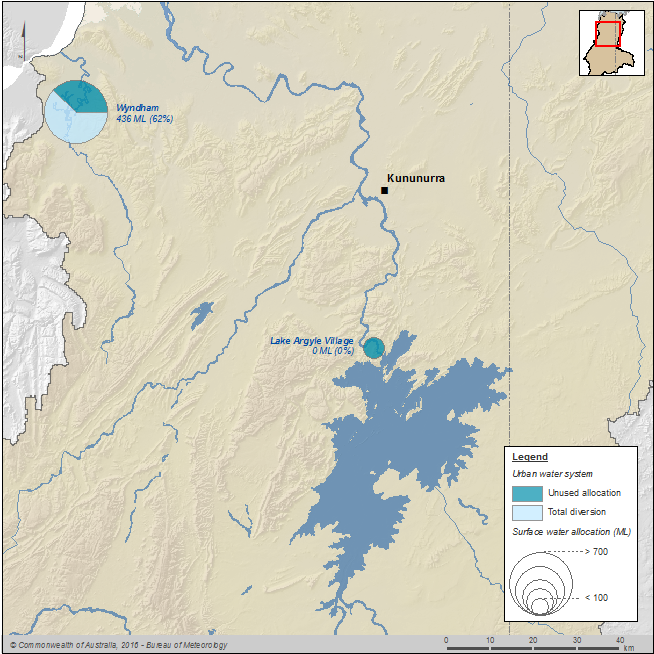
Figure N7 Water diversions to the urban water system for each town during the 2014–15 year; percentage of allocation diverted is also shown
Surface water balancing item
The calculation of the surface water balance (Table N5) on the surface water store yielded a balancing item of –1,015,905 ML. This is approximately 10% of the total surface water store volume at the end of the 2014–15 year and approximately 16% of the total surface water inflows during the 2014–15 year. The negative balancing item indicates that either the inflows are too high or the outflows are too low.
| Volume (ML) | |
| Opening balance (1 July 2014) | 10,944,857 |
| Total surface water inflows | 6,467,901 |
| Total surface water outflows | (6,453,883) |
| Closing balance (30 June 2015) | (9,942,970) |
| Balancing item | (1,015,905) |
It is likely that the balancing item is primarily attributed to uncertainties associated with the runoff to surface water (a large source of surface water increase), river outflow from the region (a large source of surface water decrease), and the lack of an estimate of surface water discharge to groundwater.
Runoff is estimated using a combination of observed streamflow data and rainfall–runoff model outputs (see Quantification approaches) and it is reasonable to expect a 10–20% uncertainty around this estimated runoff volume (+/– 1,170,000 ML). The river outflow to sea is based on measured flow data collected at the most downstream station along a river. There is no adjustment made for the contributing area below the gauging station (see Quantification approaches). As such, outflow to sea is likely to be underestimated by 5–10% (380,000 ML).
Groundwater store
The Ord region's groundwater store has two components:
- water table aquifer
- underlying aquifer.
A reconciliation of the groundwater Statement of Water Assets and Water Liabilities and Statement of Water Flows is provided in Table N6. Further details on assets, liabilities, and flows are provided in the following sections.
Methods used to derive reported volumes can be found in the Quantification approach note.
| 2015 (ML) | 2014 (ML) | |
| Opening groundwater store | – | – |
| Inflows | 9,333 | 10,683 |
| Outflows | (9,333) | (10,683) |
| Balancing item | (0) | (0) |
| Closing groundwater store | – | – |
| comprises: | ||
| Water assets | – | – |
| Water liabilities | (3,446) | (3,474) |
| Net water assets | (3,446) | (3,474) |
Assets and liabilities
Physical assets
The aquifers in the Ord region are described in the Groundwater section of the 'Contextual information'. While some information exists on water movement to and from the aquifers (see Groundwater inflows and outflows below), no value is available for the volume of water stored in the aquifers as indicated by dashes ('–') in the water accounting statements.
Non-physical assets
There are no non-physical groundwater assets in the region.
Liabilities
Groundwater liabilities in the Ord region refer to the volume of groundwater allocation remaining on licence entitlements at the end of the 2014–15 year for:
- individual users—1,194 ML
- urban water system—2,252 ML.
Most of the water supply licences for the region do not have a water management year that ends on 30 June. Therefore, the volume of allocation remaining at the end of the 2014–15 year for the Ord region is the unused component of the annual allocation for these licence entitlements. Details are provided in tables N7–N8.
As there are no carryover provisions for these licences, the portion of groundwater allocation that has not been abstracted at the end of the water year is forfeited (tables N7–N8).
Further information on all entitlements and allocation arrangements are detailed in the Groundwater rights note.
| Volume (ML) | |
| Opening balance at 1 July 2014 | 1,222 |
| Allocation | 11,506 |
| Allocated extraction | (7,560) |
| Adjustment and forfeiture | (3,974) |
| Closing balance at 30 June 2015 | 1,194 |
| Volume (ML) | |
| Opening balance at 1 July 2014 | 2,252 |
| Allocation | 2,700 |
| Allocated extraction | (1,773) |
| Adjustment and forfeiture | (927) |
| Closing balance at 30 June 2015 | 2,252 |
Inflows and outflows
A schematic diagram representing all the inflows and outflows associated with the groundwater store in the Ord region is provided in Figure N8.
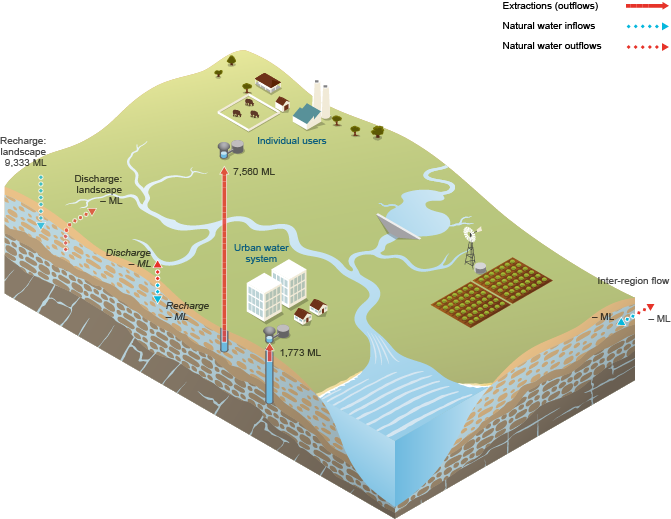
Figure N8 Water inflows and outflows for the groundwater store within the Ord region during the 2014–15 year
The only water movements to and from aquifers in the Ord region that can be quantified are the allocated extractions for individual users and urban supply (see Allocated extractions below). It is assumed that aquifer recharge from the landscape (9,333 ML) is equal to these abstractions, which is based on the assumption that the volume of extraction in the long term leads to no change in aquifer levels.
Groundwater movement across the region boundary as well as surface water–groundwater interactions are considered to occur within the region; however, these flows could not be quantified, as indicated by dashes ('–') in Figure N8. An expansion of the monitoring bore network and improved understanding of aquifer extent and properties are required to adequately quantify groundwater movement in the region.
Allocated extractions
Most of the entitled extraction of allocated groundwater store in the Ord region is for individual use. During the 2014–15 year, 7,560 ML of groundwater was taken by individual users, which accounts for approximately 81% of the total allocated groundwater extraction. Licences primarily relate to water sourced from the Canning–Kimberley groundwater area for mining purposes (see Groundwater rights note).
Total groundwater extracted for urban water supply during the 2014–15 year was 1,773 ML, which accounts for approximately 19% of the total allocated groundwater extraction. This volume includes town supply for Kununurra and Halls Creek (Figure N9).
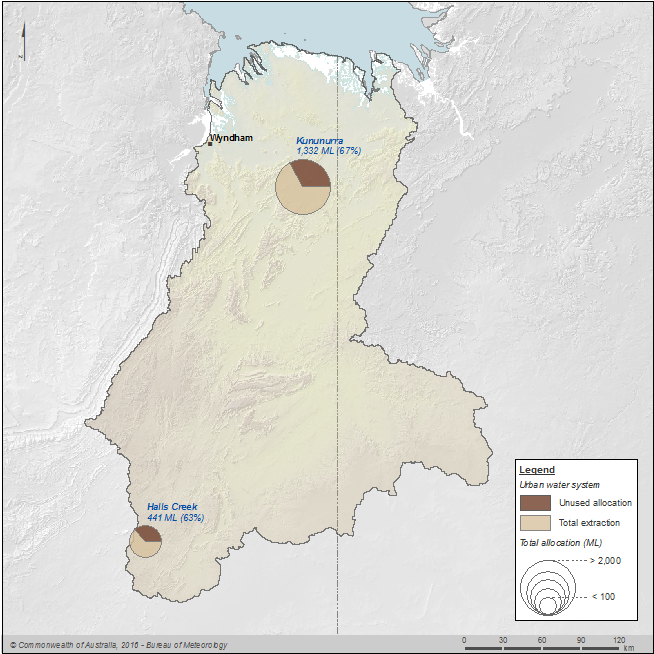
Figure N9 Water extractions to the urban water system for each town during the 2014–15 year; percentage of allocation extracted is also shown
Groundwater balancing item
As shown above, the only groundwater outflows that can be quantified are the entitled abstractions for individual users and urban supply. It is assumed that the total groundwater inflow (recharge from landscape) is equal to these abstractions, so the groundwater store is assumed to balance (i.e., the balancing item is zero).
Unaccounted-for difference
The volume recognised in the water accounting statements (1,015,905 ML) represents the total unaccounted-for difference for the Ord region for the 2014–15 year.
The unaccounted–for difference is the volume necessary to reconcile the opening water storage and closing water storage with the total water inflows and total water outflows reported in the water accounting statements. It is calculated according to Table N9.
| Volume (ML) | |
| Opening water storage balance (1 July 2014) | 10,944,857 |
| Total water inflows | 6,477,234 |
| Total water outflows | (6,463,216) |
| Closing water storage balance (30 June 2015) | (9,942,970) |
| Unaccounted-for difference | (1,015,905) |
The unaccounted–for difference can also be calculated by summing the volumes necessary to reconcile (balance) the opening and closing storage with the water inflows and outflows of each of the separate water stores of the region, as shown in Table N10.
| Volume (ML) | |
| surface water store | (1,015,905) |
| groundwater store | 0 |
| Unaccounted-for difference | (1,015,905) |
The volume of water in the groundwater stores within the Ord region could not be quantified. The Western Australian Department of Water, in managing groundwater in the region, estimates that the volume of recharge to groundwater was equivalent to the volume of extraction. Therefore the volume of the balancing item for the groundwater store is assumed to be 0 ML.









